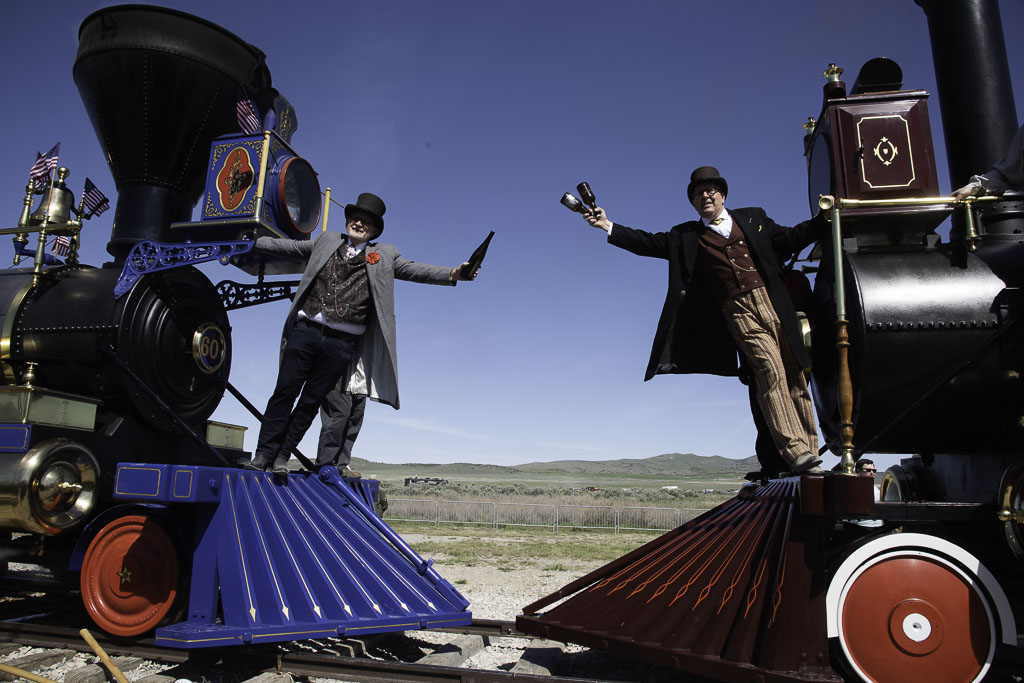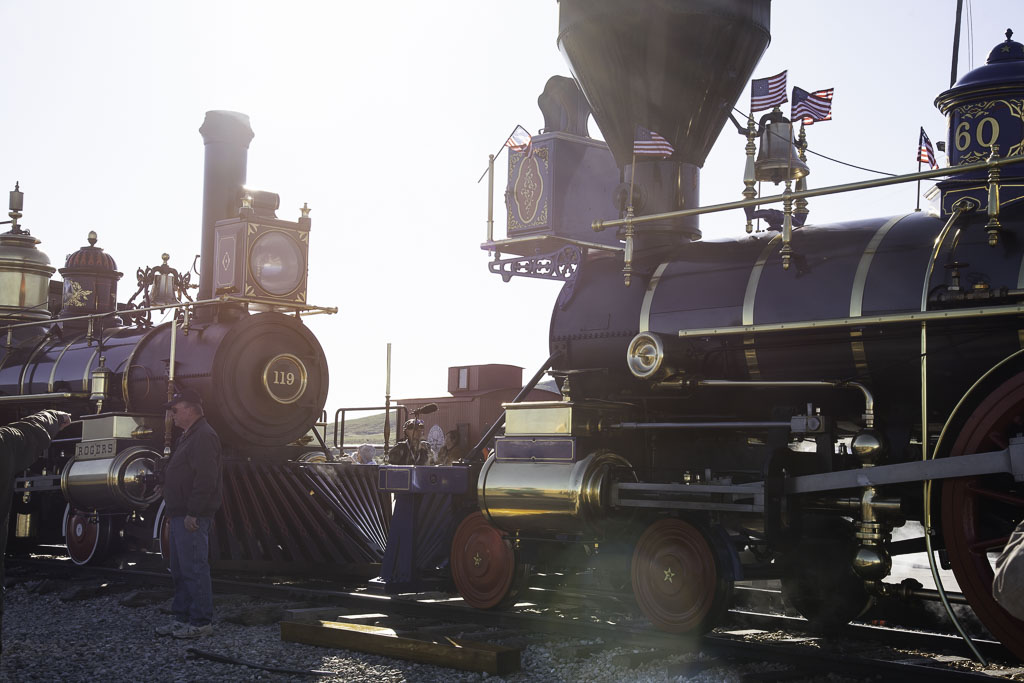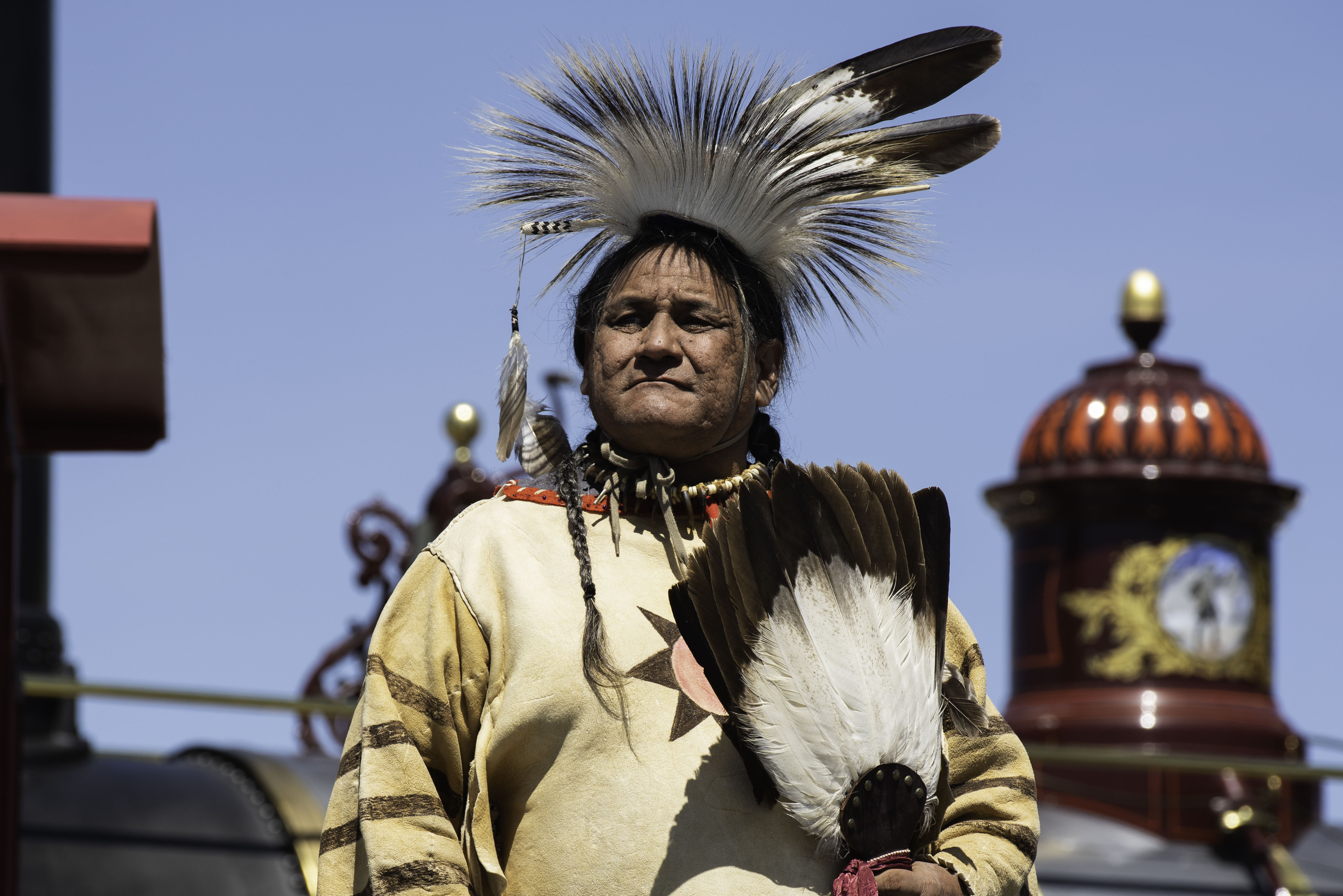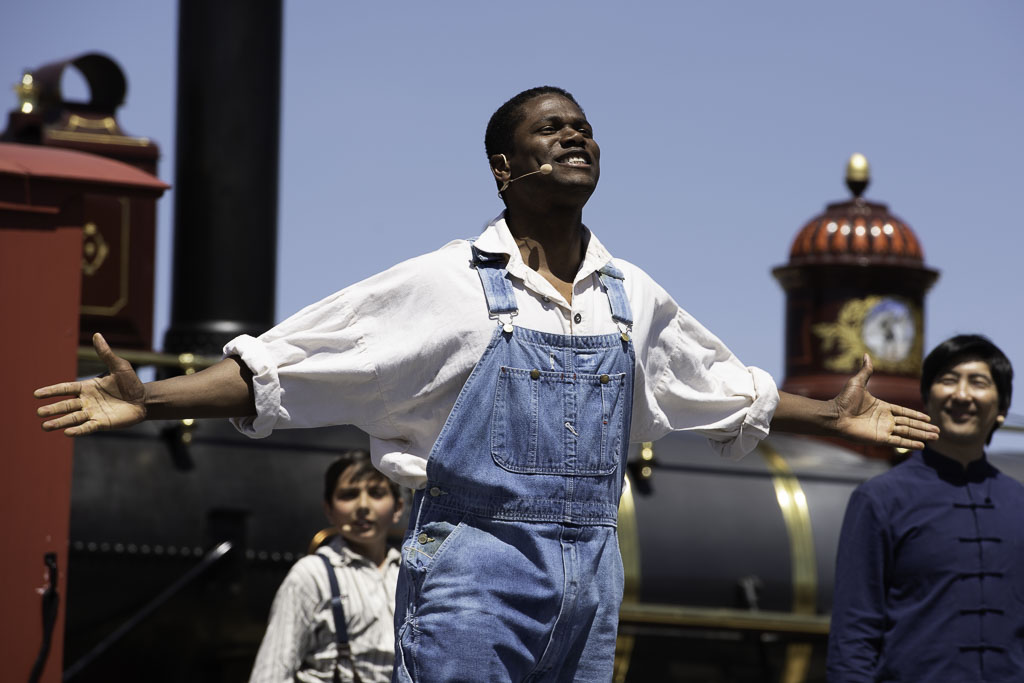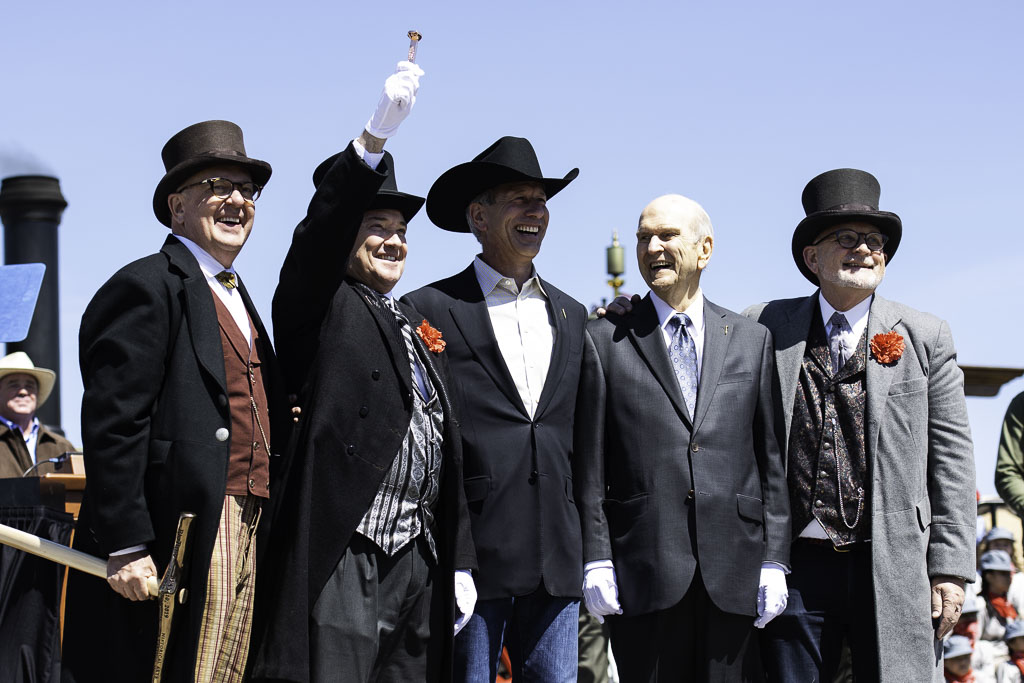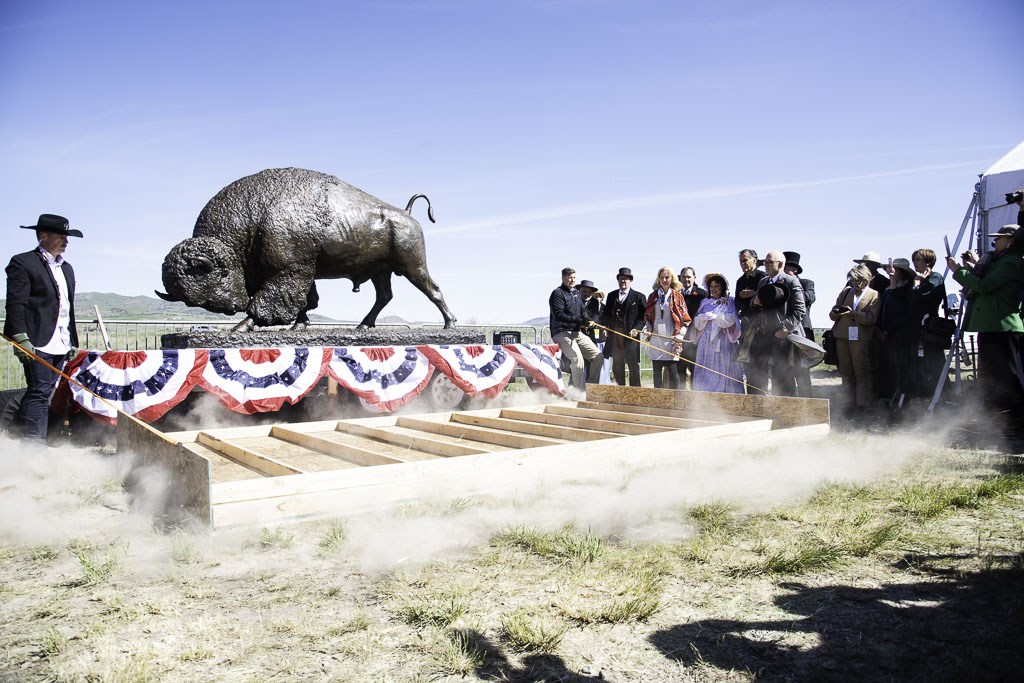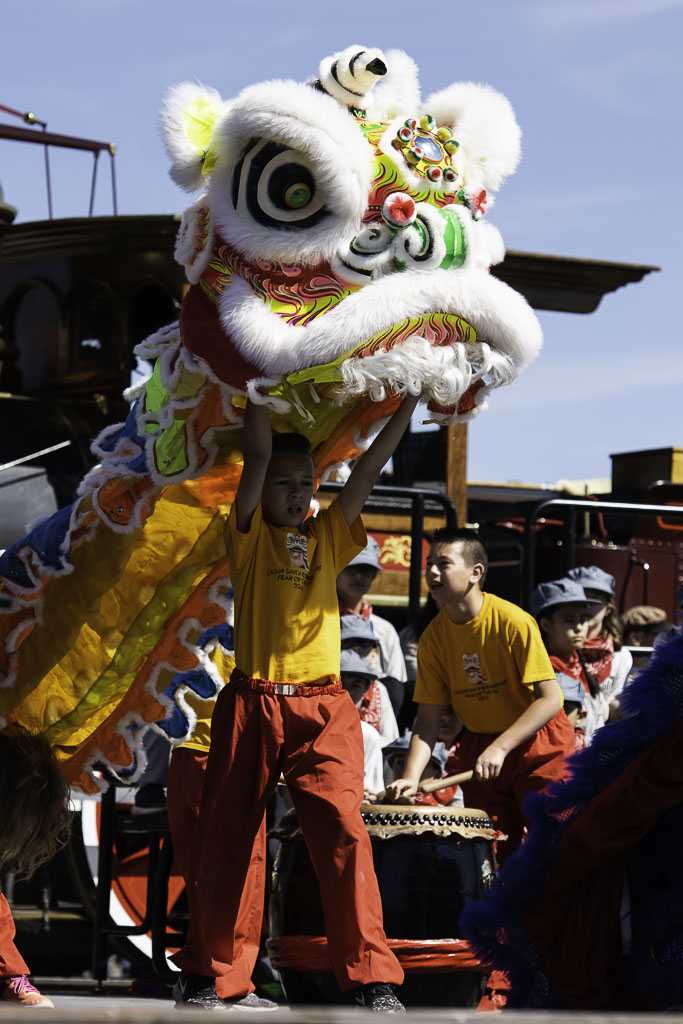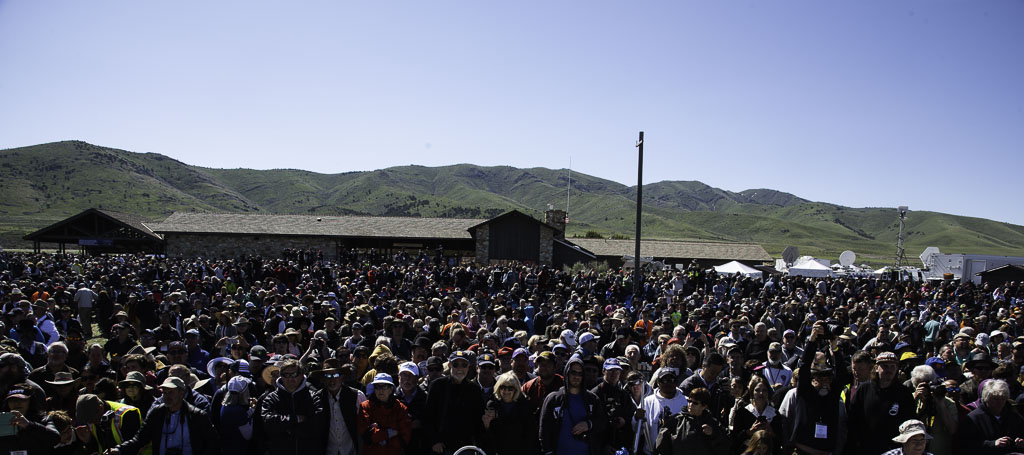Spike 150: Irish join Chinese as one in solidarity for recognition 150 years later at Golden Spike’s Sesquicentennial Anniversary
(Video by Klaus VanZanten and Kyle Jensen)
(PROMONTORY POINT, UTAH) — Thousands showed up from around the globe on Friday, May 10 to celebrate the 150th Anniversary of when final golden spike was tapped into a railroad tie on May 10, 1869, which joined the Central and Union Pacific railways, making the Transcontinental Railroad.
Attendees included dignitaries such as Gov. Gary R. Herbert, the President of The Church of Jesus-Christ of Latter-day Saints, Russell M. Nelson, Rep. Rob Bishop and other dignitaries from local and national governments who spoke to the
spectators and railroad workers’ descendants.
After the reenactment and spike ceremony, there was a wreath laying and a jet flyover with
fireworks to help commemorate the area now being designated as Golden Spike National
Historical Park, Utah’s sixth National Park.
It is estimated that up to 25,000 Chinese helped work on the railroad, according to Spike 150.
While up to 12,000 Irish were involved, there were around 4,000 Latter-day Saints and 3,000
Civil War veterans who helped build the railroad. Between 500 to 1,000 German, Italians and
other nationalities helped as well. It is unknown exactly how many Native Americans and
African Americans worked on the railroad.
The Spike 150 Golden Spike Sesquicentennial Celebration at Promontory Summit ran from
May 10-12, 2019.
FULL STORY:
Irish join Chinese as one in solidarity for recognition 150 years later at Golden Spike’s Sesquicentennial Anniversary
PROMONTORY SUMMIT, UTAH – An Irish rail worker descendant’s hand rises above the crowd,
but instead of grasping onto a mallet to nail in a spike he tightly grasps the hand of a Chinese
rail worker descendant in solidarity at the very place where thousands of Irish and Chinese
made the iconic railroad a reality with their bare hands 150 years prior on this same day.
“This is a turning point,” says J. Patrick Goggins, a descendant of an Irish immigrant railroad
family.
Goggins, of San Francisco lowered his hand around the crowd during the Spike 150’s Golden
Spike Sesquicentennial celebration ceremony on Friday as he explained what made this
celebration so different – inclusivity on the part of celebration organizers.
“That’s what is outstanding about this 150 th , because I have been to past ones where the
emphasis was really on the capitalists and financiers (of the completion of the transcontinental
railroad). The workers, regardless where they came from, were not emphasized.”
U.S. Secretary of Transportation Elaine Chao made it a point to offer what many felt was long
overdue recognition to the laborers who constructed thousands of miles of railroad, including
laying a record 10 miles of track in one day.
“As the first U.S. Secretary of Transportation of Chinese ancestry, I have the unique and moving
opportunity to fully acknowledge and recognize the contributions and sacrifices of these
laborers of Chinese heritage to the construction of the transcontinental railroad,” Chao told the
crowd of a couple thousand at the celebration.
The audience, who stood or sat in chairs gathered around the dusty historic rail line, clapped
and cheered.
“Several of us Irish came (here today) to show solidarity with the Chinese workers,” Goggins
said, adding that he is a member of the Chinese Railroad Worker Descendants Association even
though he is Irish and that’s how he met Chinese railroad worker descendant, Lotus Yee Fong.
He held hands with her for a group photo during the celebration.
Fong said it was important for Friday’s event have “national spokespeople, talking about the
accomplishment that was a majority Irish and Chinese workers.”
The next step, she says, is to go home and create a healing dialogue in her community about
not being divided or conquered by racial division.
“We can learn from a painful history and we can work together for what both communities
need,” Fond said. “We have to heal a painful past.”
It is estimated that up to 25,000 Chinese helped work on the railroad, according to Spike 150.
While up to 12,000 Irish were involved, there were around 4,000 Latter-day Saints and 3,000
Civil War veterans who helped build the railroad. Between 500 to 1,000 German, Italians and
other nationalities helped as well. It is unknown exactly how many Native Americans and
African Americans worked on the railroad.
During the celebration, a musical reenactment called “As One” explains that on a sunny spring
morning on May 10, 1869, a final Golden Spike was tapped into a railroad tie in the rural
western desert of Utah in the United States. A telegram operator sent a one word message to
the world that would signify six years of hard work, executed by tens of thousands of workers
who were primarily Chinese and Irish, had reached a conclusion — “done.” The completion of
the transcontinental railroad on that historic day opened up the capability for explosive
economic growth to span the nation and enrich the lives of Americans to this present day.
After the reenactment and spike ceremony, there was a wreath laying and a jet flyover with
fireworks to help commemorate the area now being designated as Golden Spike National
Historical Park, Utah’s sixth National Park.
Dignitaries from local and national governments were in attendance and some spoke to the
spectators, including Ireland Ambassador to the United States, Daniel Mulhall.
“The transcontinental railroad was one of the greatest feats of the 19 th Century,” Mulhall told
the crowd during a celebratory toast with champagne.
On Friday, Mulhall said it was time for us to remember those workers 150 years ago who laid
rails, built bridges and blasted rock, to help make a reality out of the dreams of this nation.
With the help of his wife, Mulhall raised a glass to salute the tens of thousands of hands from
many lands who built the epic railroad and truly unified this vast and diverse country.
“It falls to me to propose a toast to those workers whose names are largely absent from the
historical record, but whose lives and labors were indispensable for this country’s
development.”
One Irishman in the crowd, Sean Bogue, waved an Irish flag in support of his heritage
associated with the railroad and also during a performance by The Black Irish Band as they
played Celtic and Americana music on a stage during the celebration.
“I represent Ireland every day I live, because that’s where I’m from,” Bogue said adding that he
hails from County Cavan near Northern Ireland.
Bogue said he started out as a laborer himself in Ireland, working in construction. He eventually
achieved the American dream by owning his own business and immigrated to the U.S. in the
early ‘90s.
He was hopeful to see descendants of the Irish and Chinese getting along working together just
as they did to finish the railroad.
“But for me, as just a wee Irish soul on this earth I think it’s fantastic to see the collaboration of
the two working laborers … to see that and join together to celebrate 150 years later.”
The Spike 150 Golden Spike Sesquicentennial Celebration at Promontory Summit runs from
May 10-12, 2019.
During the celebration, a musical reenactment called “As One” explains that on a sunny spring
morning on May 10, 1869, a final Golden Spike was tapped into a railroad tie in the rural
western desert of Utah in the United States. A telegram operator sent a one word message to
the world that would signify six years of hard work, executed by tens of thousands of workers
who were primarily Chinese and Irish, had reached a conclusion — “done.” The completion of
the transcontinental railroad on that historic day opened up the capability for explosive
economic growth to span the nation and enrich the lives of Americans to this present day.

